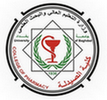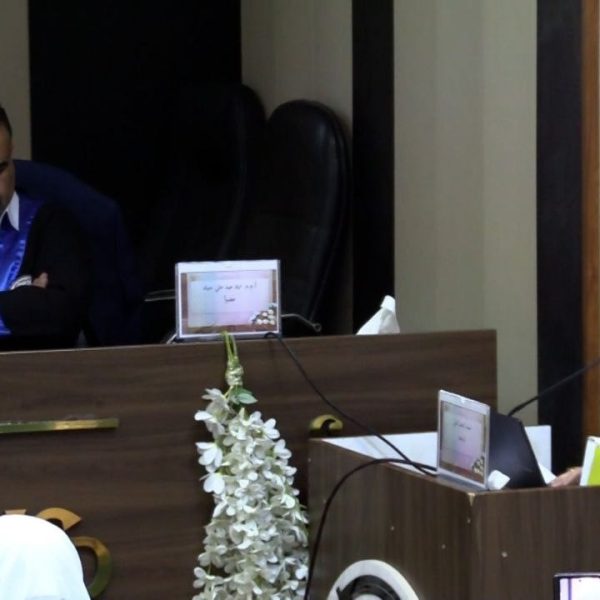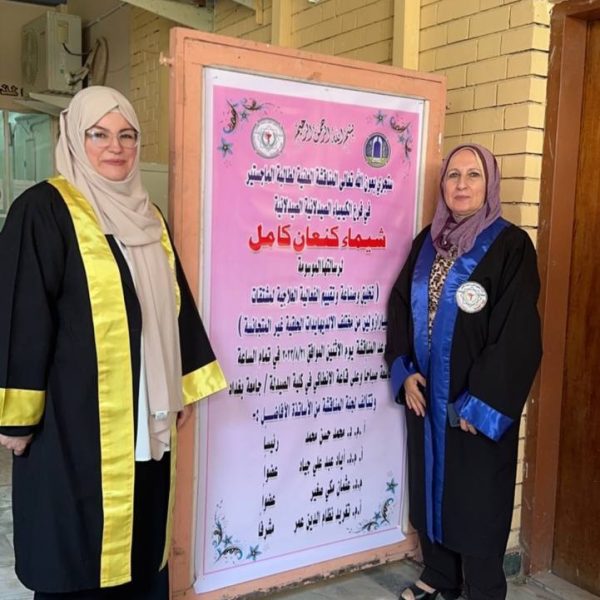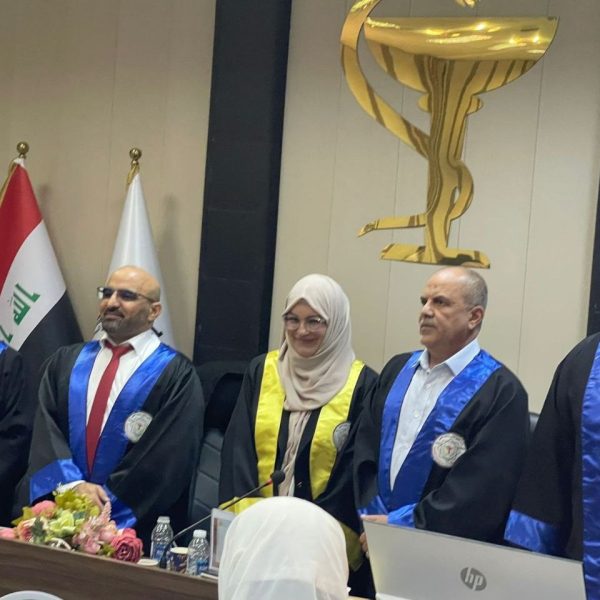The Faculty of Pharmacy discussed the Master’s Degree thesis, entitled Synthesis and Preliminary Pharmacological Evaluation of New Furanyl-Pyrazoline Derivatives, by Shaymaa Kanaan Kamil and the supervisor, Assist. Prof. Tagreed N. A. Omar, in the Pharmaceutical Chemistry Department. The study aimed to Nine new pyrazoline-furanyl derivatives (4(a-i)(3-(furan-2-yl)-5-phenyl-4,5-dihydro-1H-pyrazol-1-yl)-3-phenylpropan-2-one) were synthesized and evaluated for their anti-inflammatory and antimicrobial activity. The synthesis of the proposed compounds was successfully achieved by the stated procedures, and the reaction progress was monitored by thin-layer chromatography. The synthesized compounds were also characterized by FTIR and 1HNMR. The target synthesized compounds had been synthesized in four steps: The first step included the synthesis of different chalcones using Cross-Aldol Condensation (Claisen-Schmidt) 1(a-g) ((E)-3-(furan-2-yl)-1-phenylprop-2-en-1-one); the second step included the synthesis of pyrazolines 2(a-g) (3-(furan-2-yl)-5-phenyl-4,5-dihydro-1H-pyrazole); the third step included the synthesis of 3(I-II) (2-chloro-N-phenyl acetamide and 2-chloro-N-(4-nitrophenyl) acetamide); and finally, the fourth step involved the synthesis of pyrazoline-aniline derivatives 4(a-i) (1-(3-(furan-2-yl)-5-phenyl-4,5-dihydro-1H-pyrazol-1-yl)-3-phenylpropan-2-one) as final products. The pharmacological activities of the final synthesized compounds as anti-inflammatory agents were tested in vivo using the egg-white-induced edema method, and antimicrobial activity was evaluated using a well diffusion method against gram-negative (E. coli and P. aeruginosa) and gram-positive (S. aureus and S. pyogenes). Also, the antifungal activity was tested against Candida albicans. All compounds reduced the edema compared with propylene glycol at 50% v/v as a control. The compounds with electron withdrawal groups (Br, Cl, and NO2) 4a, 4b, and 4e showed anti-inflammatory activity compared to diclofenac sodium as a standard drug, while compounds with double electron withdrawal groups (Br and NO2) 4h and 4i showed stronger anti-inflammatory activity than diclofenac sodium. For antibacterial activity, the compounds have moderate to high antibacterial activity against gram-positive bacteria and gram-negative bacteria. Compounds with electron withdrawal groups (Br, Cl, and NO2) (4a, 4b, 4e, 4h, and 4i) showed more antibacterial activity against gram-negative bacteria than gram-positive bacteria, while compounds with electron-donating groups (NH2 and OH) (4f and 4g) showed more activity against gram-negative bacteria. Compounds with functional groups (Br, NO2, and OH) 4a, 4e, 4g, and 4i showed significant inhibition of fungal growth in comparison with fluconazole as a standard antifungal drug.





